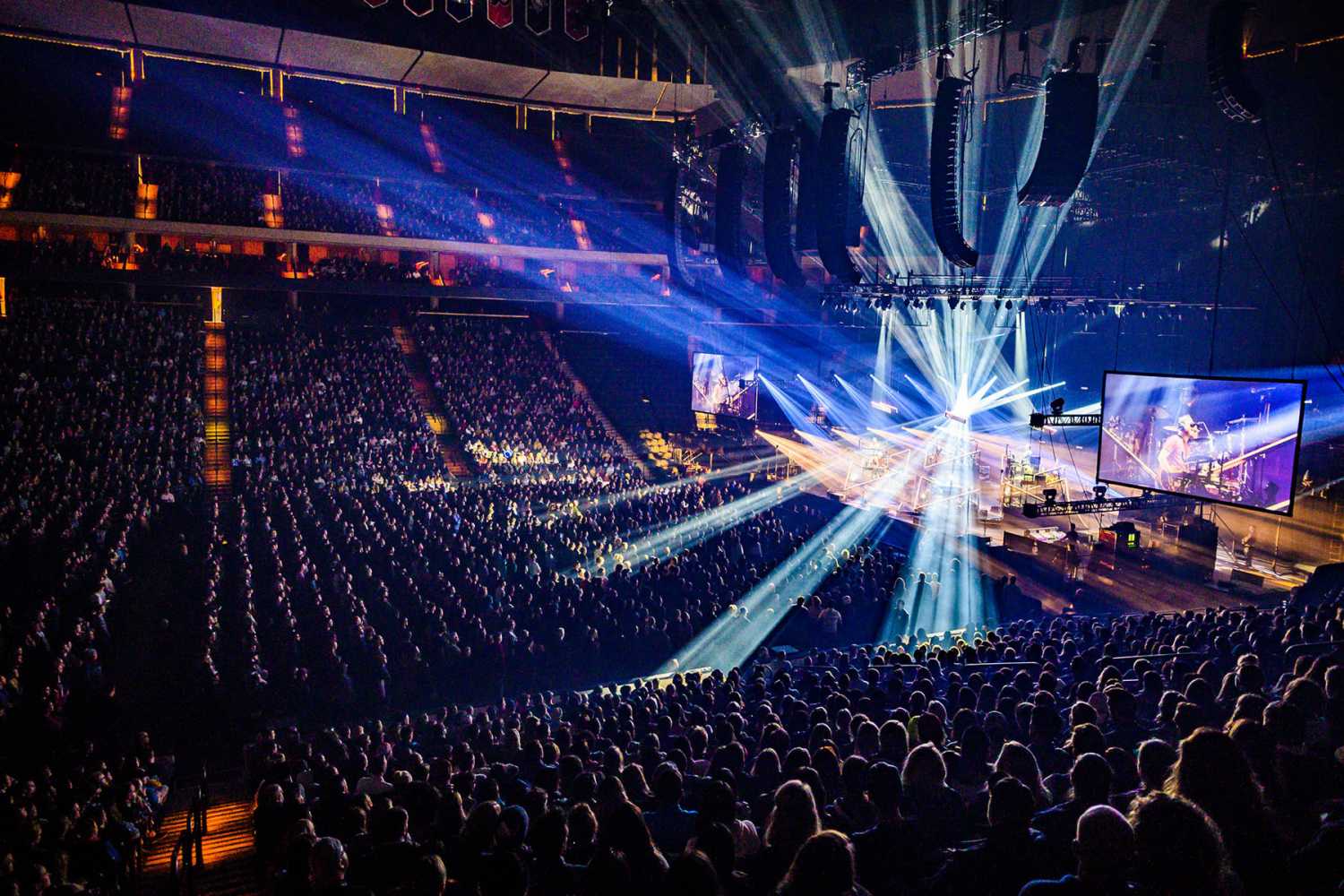L-ISA supports Bon Iver arena tour dates
- Details

According to Firehouse Productions account rep Chris Russo, the tour’s L-ISA configuration featured three central arrays each composed of 16 K2 plus three Kara down, flanked to the left and right by hangs of 24 Kara as the Scene system, which extended over the full width of the stage. Farther out to the left and right, two per side, 12-enclosure Kara arrays served as the Extension system, while two fill-arrays of 12 K2 expanded out-fill coverage to 180° of seating.
Two hangs of 10 KS28 each were flown in close proximity to the centre K2 arrays providing homogeneous LF coverage, while three ARCS II per side down below were used for nearfield out-fills and six Kara lined across the stage delivered front-fill. Fifty-two LA12X amplified controllers powered the entire system, and four new Milan-certified P1 AVB processors plus a pair of L-ISA Processors rounded out the L-Acoustics system complement.
Although Bon Iver FOH Engineer Xandy Whitesel had mixed using L-ISA technology for a select “one-off” show with the band at the Santa Barbara Bowl a couple of years ago, this was his first opportunity to tour with the setup. “Andrew Gilchrest, our system tech, and I found that the mix image and tonality represented at FOH was very consistent and natural-sounding throughout each venue with L-ISA,” he shares.
“Even the far ‘nosebleed’ seats of the arenas sounded fantastic, as did the extreme left and right sides of the main floor where the L-ISA coverage very transparently transitioned over to the out-fill coverage. There was no low/mid ‘wonk’ from seat-to-seat—it was all very clean and consistent - and there was also a noticeable attenuation of low end bleeding back onto the stage, which allowed the band to enjoy more precise in-ear mixes.”
The two-hour nightly show was performed by six musicians - two drummers/percussionists and four multi-instrumentalists/vocalists - generating 95 inputs from the stage, not including guests, talk mics and local channels. All musicians were on hard-wired IEMs, eliminating the need for stage wedges. Front-of-house and monitor positions both featured DiGiCo Quantum 7 consoles, and Whitesel’s desk fed the L-ISA Processor via direct outs from each channel.
(Jim Evans)
















